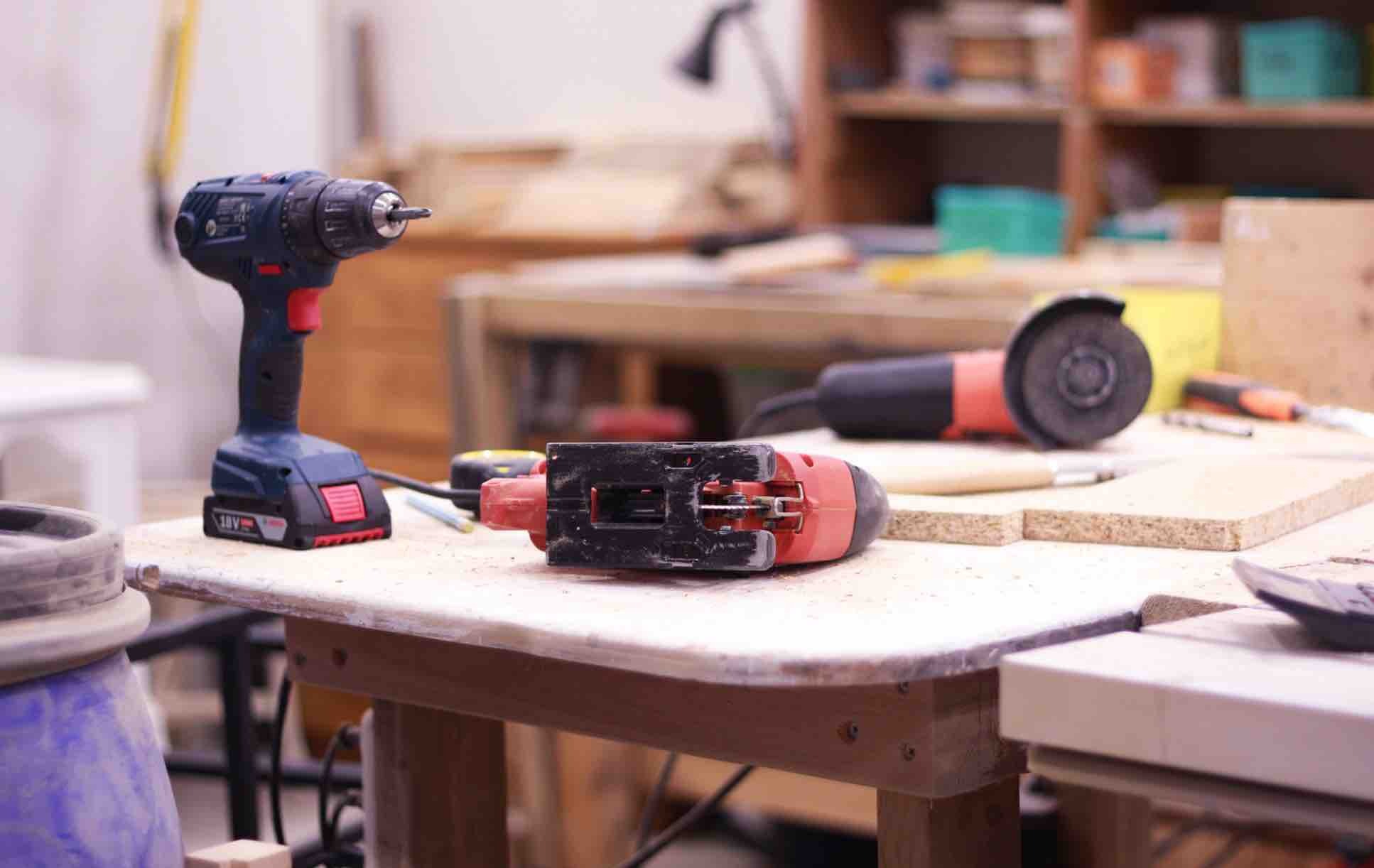Why cordless power tools are taking over the market and how to choose the right ones for you
As John walked into his automotive workshop, he couldn't help but feel a sense of pride in his tools. He had a complete set of corded, hand, and air-powered tools that he had used for years, which had served him well. But as he continued thinking about why his friend Denis will fix a car within 10 minutes of clients arriving at his workshop, a similar job takes John around 35 minutes to fix. Could it be the type of tools Denis use? Sure, Denis is using cordless power tools and air tools. His friends and colleagues had all switched to cordless power tools. At first, he dismissed it as a passing trend, but as time passed, he wondered why everyone was making the switch. Little did he know that he was about to discover the many benefits of cordless power tools as he worked on the tools and feature audit. This article is about why cordless power tools are taking over the market and how to choose the right one. We all need to care because increased productivity is the core of an increase in income.
Introduction to cordless power tools
Cordless power tools have become increasingly popular in recent years and for good reason. They offer several advantages over corded power tools, including portability, convenience, and improved battery technology. This article will explore why cordless power tools are taking over the market and how to choose the right ones for you.
Advantages of Cordless Power Tools
- Portability and Convenience: Cordless power tools are more portable and convenient than their corded counterparts. They don't require an electrical outlet, so you can take them anywhere without worrying about finding a power source. This makes them ideal for use on job sites, in outdoor settings, or in areas with limited access to electricity.
- Safety and Flexibility: Cordless power tools are safer and more flexible than corded power tools. You can move freely and focus on the task with no cords to trip over or get tangled in. This flexibility also makes working in tight spaces or hard-to-reach areas more accessible.
Improved Battery Technology: The battery technology used in cordless power tools has improved significantly in recent years. Lithium-ion batteries are now commonly used, which offer longer run times, faster charging times, and more excellent durability than previous battery types.
How to Choose the Right Cordless Power Tools
- Consider the type of job you will be doing: Different cordless power tools are designed for different kinds of jobs. Consider the tasks you will be performing and choose a tool specifically designed for that task.
- Look for high-quality batteries and chargers: The battery and charger are essential components of cordless power tools. Look for high-quality batteries and chargers with fast charging times, long run times, and durability.
- Choose a reputable brand: Cordless power tools are an investment, so choose a reputable brand with a warranty and good customer support.
- Read reviews and do your research: Before making a purchase, read reviews and do your research to ensure that you are choosing the best cordless power tool for your needs.
Comparison of Cordless Power Tools vs. Corded Power Tools
- Power and Performance: Corded power tools generally offer more power and performance than cordless power tools. However, cordless power tools have improved significantly in recent years and can now compete with corded power tools in terms of power and performance.
- Portability and Convenience: Cordless power tools are more portable and convenient than corded ones, as they don't require an electrical outlet. This makes them ideal for use on job sites, in outdoor settings, or in areas with limited access to electricity.
- Cost and Maintenance: Cordless power tools are generally more expensive than corded ones but require less maintenance and offer greater flexibility and convenience.
Common Types of Cordless Power Tools
- Cordless Drills: Cordless drills are the most common type of cordless power tool used for various tasks, including drilling holes and driving screws.
- Cordless Circular Saws: Cordless circular saws are used for cutting wood, metal, and other
Comparison of Cordless Power Tools vs. Corded Power Tools
The choice between corded and cordless is important for power tools. Here are some key factors to consider when comparing cordless and corded power tools.
- Power and Performance: Corded power tools generally offer more power and performance than cordless ones. This is because corded power tools have a constant power source, while cordless power tools rely on batteries. However, cordless power tools have improved significantly in recent years and can now compete with corded power tools in terms of power and performance. For many DIYers and professionals, cordless power tools offer enough power and performance for their needs.
- Portability and Convenience: One of the most significant advantages of cordless power tools is their portability and convenience. With no cords to worry about, cordless power tools can be used anywhere, making them ideal for use on job sites, in outdoor settings, or areas with limited access to electricity. On the other hand, corded power tools require a power source, limiting their portability and convenience.
- Cost and Maintenance: Cordless power tools are generally more expensive than corded ones but require less maintenance and offer greater flexibility and convenience. Corded power tools require a constant source of electricity, which can add to the cost of using them. Additionally, corded power tools require regular maintenance to ensure they function correctly.
Common Types of Cordless Power Tools
- Cordless Drills: Cordless drills are the most common type of cordless power tool used for various tasks, including drilling holes and driving screws. They are available in multiple sizes and styles, from compact models for light-duty studies to heavy-duty models for more demanding jobs.
- Cordless Circular Saws: Cordless circular saws are used for cutting wood, metal, and other materials. They are available in various blade sizes and styles, from compact models for light-duty tasks to heavy-duty models for more strenuous jobs.
- Cordless Reciprocating Saws: Cordless reciprocating saws are used for cutting wood, metal, and other materials. They are designed for tight spaces and hard-to-reach areas, making them ideal for demolition work.
- Cordless Impact Drivers: Cordless impact drivers are used for driving screws and other fasteners. They are designed to deliver high torque and are ideal for heavy-duty tasks.
Conclusion
Whether you're a DIYer or a professional, cordless power tools can provide the power, performance, and convenience you need to get the job done right. Cordless power tools offer several advantages over corded ones, including portability, comfort, and improved battery technology. When choosing cordless power tools, consider the job you will be doing, look for high-quality batteries and chargers, choose a reputable brand, and do your research. By following these tips, you can ensure that you are selecting the best cordless power tool for your needs.
Frequently asked questions FAQ
Why are battery powered power tools becoming so popular?
Cordless power tools have become increasingly popular in recent years and for good reason. One of the main reasons for their popularity is their convenience and portability. With cordless power tools, there are no external cords to worry about, making them more convenient to use and easier to transport from job site to job site. This means that you can work anywhere without being tethered to a power outlet.
Another reason cordless power tools have become so popular is the advancement in battery technology. Lithium-ion batteries, now commonly used in cordless power tools, offer longer run times, faster charging times, and more outstanding durability than previous battery types. This means you can work longer without having to stop and recharge your tool, and you can get back to work more quickly when you need to recharge.
Cordless power tools are also safer and more flexible than corded ones. You can move freely and focus on the task with no cords to trip over or get tangled in. This flexibility also makes working in tight spaces or hard-to-reach areas more accessible. Plus, the lack of cords means there is less risk of electrocution, making them safer to use.
What are the disadvantages of cordless power tools?
Cordless power tools have some disadvantages, including:
- Short battery life, requiring frequent charging
- Long charging time for batteries
- Expensive batteries, particularly for high-powered 36V and 54V platforms
Is battery power the future?
Sure, this is because of the significant projected growth of the sector. The battery technology market is expected to grow from $95.7 billion in 2022 to $136.6 billion by 2027, with a CAGR of 7.4%.
Contact us for a free quote on needed cordless power tool.










